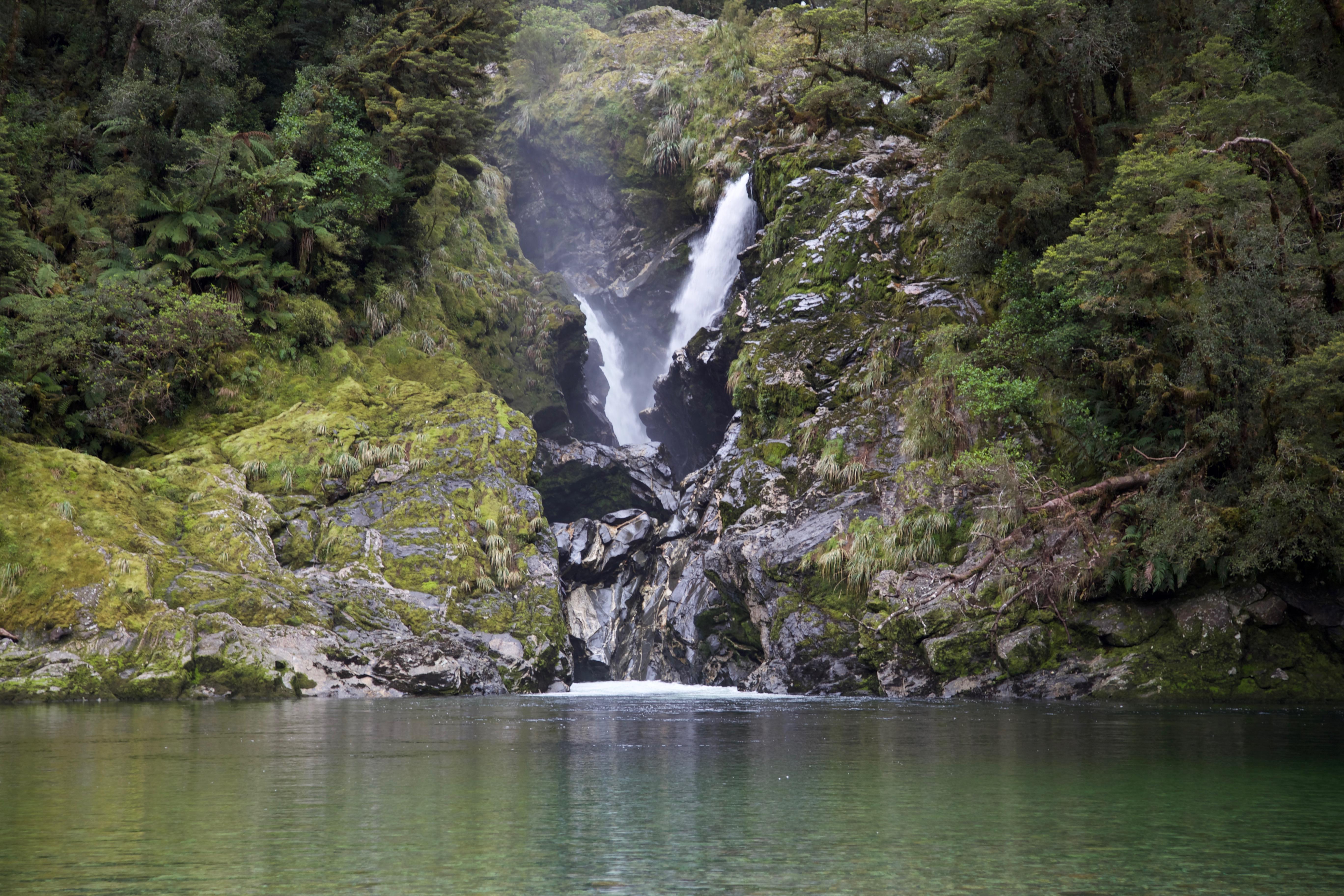Respiratory physician Lutz Beckert considers chronic obstructive pulmonary disease management, including the prevention of COPD, the importance of smoking cessation and pulmonary rehabilitation, and the lifesaving potential of addressing treatable traits. He also discusses the logic of inhaler therapy, moving from single therapy to dual and triple therapy when indicated, as well as other aspects of management
Auckland doctor seeks adoptive parents for Fiordland valleys as birdlife dwindles
Auckland doctor seeks adoptive parents for Fiordland valleys as birdlife dwindles
DOC faces an almost impossible task, so it must concentrate its work in particular areas and leave others unprotected
An Auckland ophthalmologist is searching for conservation enthusiasts to “adopt” a valley in Fiordland.
North Shore ophthalmologist Mike Fisk is one of a group of 10 founders of the Valleys Project, an effort to help save Fiordland birdlife.
Other doctors taking part are fellow ophthalmologist David Pendergrast, orthopaedic surgeon Matthew Tomlinson and anaesthetist Charles Hollings.
Dr Fisk, who has been hunting and tramping in Fiordland since the 1970s, says there has been a marked decline in native birdlife in the area.
The problem is introduced animals, particularly stoats, rats and possums.
Now, he says, there are probably more native birds in his Auckland garden than in the valleys he visits.
Dr Fisk says the Department of Conservation faces an almost impossible task, so it must concentrate its work in particular areas and leave others unprotected despite their conservation value.
DOC staff have prioritised eight Fiordland valleys with significant whio (blue duck) populations for the Valleys group to tackle.
Whio populations are in decline, with between 2000 and 3000 left across the country.
The project’s main work is setting up traplines for stoats and rats on both sides of the rivers, with trap stations every 100 metres.
The group is using New Zealand-designed traps, which reset themselves 24 times with help from a carbon dioxide cannister that then needs to be replaced. The selected areas complement DOC’s conservation efforts.
The project’s biggest costs come in the first year. It costs $40,000 to set up 10km of trapline and $6000 to maintain it every six months, although costs will vary. The valleys available to adopt include some requiring boat or helicopter access. Each valley offers different perks in terms of recreational fishing or hunting.
The founding members have already run a trapline up and down one valley as an example of what can be done.
Dr Fisk hopes groups or corporate organisations will consider taking responsibility for a valley.
Groups are welcome to fund and carry out the trapping work themselves, or donate money for others to do the legwork, he says. He is happy to play matchmaker for interested individuals who want to find others they can work with to adopt a valley.
The group also organises possum trappers to work the area, and they make money by selling the possum skins.
It’s a way to monetise conservation and rid the valleys of possums, without putting down poison, Dr Fisk says.
Anyone interested in taking part can find the group at valleys.co.nz
- Log in to post comments









![Barbara Fountain, editor of New Zealand Doctor Rata Aotearoa, and Paul Hutchison, GP and senior medical clinician at Tāmaki Health [Image: Simon Maude]](/sites/default/files/styles/thumbnail_cropped_100/public/2025-03/Barbara%20Fountain%2C%20editor%20of%20New%20Zealand%20Doctor%20Rata%20Aotearoa%2C%20and%20Paul%20Hutchison%2C%20GP%20and%20senior%20medical%20clinician%20at%20T%C4%81maki%20Health%20CR%20Simon%20Maude.jpg?itok=-HbQ1EYA)
![Lori Peters, NP and advanced health improvement practitioner at Mahitahi Hauora, and Jasper Nacilla, NP at The Terrace Medical Centre in Wellington [Image: Simon Maude]](/sites/default/files/styles/thumbnail_cropped_100/public/2025-03/2.%20Lori%20Peters%2C%20NP%20and%20advanced%20HIP%20at%20Mahitahi%20Hauora%2C%20and%20Jasper%20Nacilla%2C%20NP%20at%20The%20Terrace%20Medical%20Centre%20in%20Wellington%20CR%20Simon%20Maude.jpg?itok=sUfbsSF1)
![Ministry of Social Development health and disability coordinator Liz Williams, regional health advisors Mary Mojel and Larah Takarangi, and health and disability coordinators Rebecca Staunton and Myint Than Htut [Image: Simon Maude]](/sites/default/files/styles/thumbnail_cropped_100/public/2025-03/3.%20Ministry%20of%20Social%20Development%27s%20Liz%20Williams%2C%20Mary%20Mojel%2C%20Larah%20Takarangi%2C%20Rebecca%20Staunton%20and%20Myint%20Than%20Htut%20CR%20Simon%20Maude.jpg?itok=9ceOujzC)
![Locum GP Helen Fisher, with Te Kuiti Medical Centre NP Bridget Woodney [Image: Simon Maude]](/sites/default/files/styles/thumbnail_cropped_100/public/2025-03/4.%20Locum%20GP%20Helen%20Fisher%2C%20with%20Te%20Kuiti%20Medical%20Centre%20NP%20Bridget%20Woodney%20CR%20Simon%20Maude.jpg?itok=TJeODetm)
![Ruby Faulkner, GPEP2, with David Small, GPEP3 from The Doctors Greenmeadows in Napier [Image: Simon Maude]](/sites/default/files/styles/thumbnail_cropped_100/public/2025-03/5.%20Ruby%20Faulkner%2C%20GPEP2%2C%20with%20David%20Small%2C%20GPEP3%20from%20The%20Doctors%20Greenmeadows%20in%20Napier%20CR%20Simon%20Maude.jpg?itok=B0u4wsIs)
![Rochelle Langton and Libby Thomas, marketing advisors at the Medical Protection Society [Image: Simon Maude]](/sites/default/files/styles/thumbnail_cropped_100/public/2025-03/6.%20Rochelle%20Langton%20and%20Libby%20Thomas%2C%20marketing%20advisors%20at%20the%20Medical%20Protection%20Society%20CR%20Simon%20Maude.jpg?itok=r52_Cf74)
![Specialist GP Lucy Gibberd, medical advisor at MPS, and Zara Bolam, urgent-care specialist at The Nest Health Centre in Inglewood [Image: Simon Maude]](/sites/default/files/styles/thumbnail_cropped_100/public/2025-03/7.%20Specialist%20GP%20Lucy%20Gibberd%2C%20medical%20advisor%20at%20MPS%2C%20and%20Zara%20Bolam%2C%20urgent-care%20specialist%20at%20The%20Nest%20Health%20Centre%20in%20Inglewood%20CR%20Simon%20Maude.jpg?itok=z8eVoBU3)
![Olivia Blackmore and Trudee Sharp, NPs at Gore Health Centre, and Gaylene Hastie, NP at Queenstown Medical Centre [Image: Simon Maude]](/sites/default/files/styles/thumbnail_cropped_100/public/2025-03/8.%20Olivia%20Blackmore%20and%20Trudee%20Sharp%2C%20NPs%20at%20Gore%20Health%20Centre%2C%20and%20Gaylene%20Hastie%2C%20NP%20at%20Queenstown%20Medical%20Centre%20CR%20Simon%20Maude.jpg?itok=Z6u9d0XH)
![Mary Toloa, specialist GP at Porirua and Union Community Health Service in Wellington, Mara Coler, clinical pharmacist at Tū Ora Compass Health, and Bhavna Mistry, specialist GP at Porirua and Union Community Health Service [Image: Simon Maude]](/sites/default/files/styles/thumbnail_cropped_100/public/2025-03/9.%20Mary%20Toloa%2C%20Porirua%20and%20Union%20Community%20Health%20Service%20in%20Wellington%2C%20Mara%20Coler%2C%20T%C5%AB%20Ora%20Compass%20Health%2C%20and%20Bhavna%20Mistry%2C%20PUCHS%20CR%20Simon%20Maude.jpg?itok=kpChr0cc)